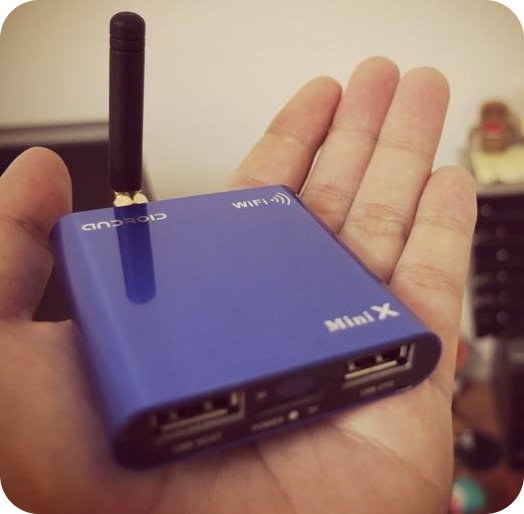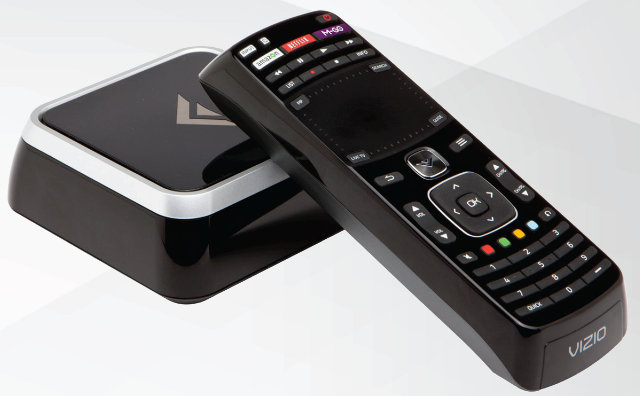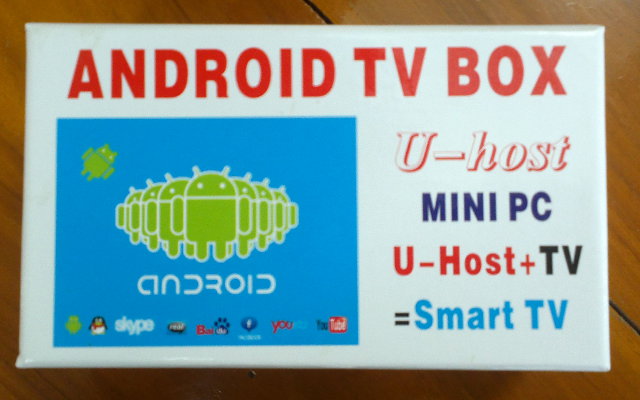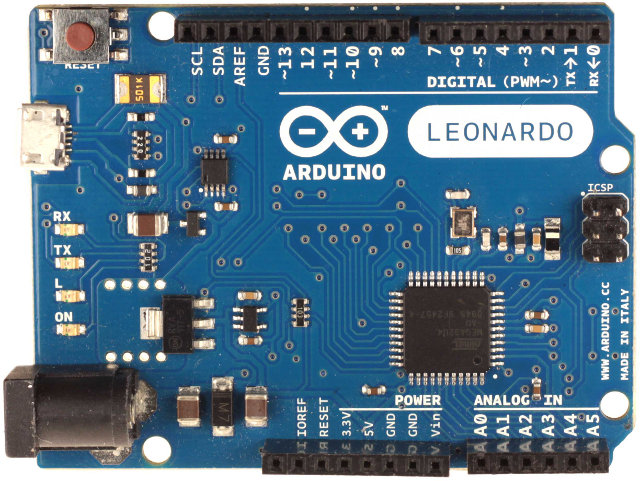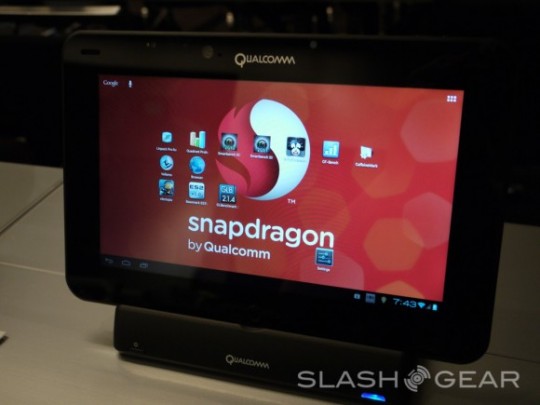I previously wrote about Mini X media player, an Android mini Media Player powered by AllWinner A10 with 512 MB RAM that runs Android 2.3. Its price has been reduced by about $10 to $67.60, and it now has a big brother called Mini Xplus that looks exactly the same except it runs Android 4.0 and comes with 1GB RAM according to Deal Extreme. Here are the device specifications based on Deal Extreme overview: CPU – AllWinner A10 (Cortex A8) with Mali-400 GPU @ 1.2 GHz Memory – 1GB DDR3 RAM Storage – 4GB NAND Flash, microSD slot Video Output – HDMI 1.3 and Composite USB – 2x USB 2.0 host Connectivity – WiFi 802.11 b/g/n Video Formats – MKV, TS, TP, M2TS, RM/RMVB, BD-ISO, AVI, MPG, VOB, DAT, ASF, TRP, FLV etc Video Codecs – MPEG1/2/4, H.264, VC-1, Divx, Xvid, RM8/9/10, VP6 Subtitle – SRT, SUB, IDX, SSA, SMI […]
Vizio Co-Start (VAP430) Google TV Stream Player
First announced at CES 2012, the Vizio VAP430 stream player featuring Google TV 2.0 has become available for pre-order for $99 last week. Here are the specs provided on Vizio website: Video Resolution Supported – 720p, 1080i, 1080p 3D Support – Yes Video Playback – H.264, MP4, MKV Audio Music Playback – MP3, AAC, WMA Audio Features – Up to 5.1 surround sound pass-through Connectivity WiFi – 802.11 n/g/b Bluetooth Ethernet – 10/100 Mbps Connections HDMI In – Connection to Cable or Satellite Box HDMI Out – Connection to TV One USB 2.0 Host port Remote control – Built-In IR Blaster, Bluetooth, Touchpad and Keyboard Dimension – 10.67 x 4.06 x 10.67 cm Weight – 300 grams They did not provide information about the processor, RAM and flash used, but I would guess it’s based on Marvell Google TV Reference Platform which is powered by ARMADA 1500 HD Secure Media […]
Android Jelly Bean on Samsung Origen Development Board (Video)
Linaro Android team has started to port Android Jelly Bean to Samsung Origen board (powered by Exynos 4 dual core processor) and can now show Android 4.1 running on the board with hardware accelerated graphics. This is a preliminary image: the touchscreen, graphics, adb works, and you can use keyboard and mouse as input devices, but Wi-Fi, Bluetooth and multimedia (hardware video decoding) still have to be worked on. If you have an Origen board, you can give it a try by downloading the binaries @ https://android-build.linaro.org/builds/~linaro-android/origen-jb-gcc47-samsunglt-stable-blob/, and follow the instructions to create a bootable SD card with linaro-media-create. Jean-Luc Aufranc (CNXSoft)Jean-Luc started CNX Software in 2010 as a part-time endeavor, before quitting his job as a software engineering manager, and starting to write daily news, and reviews full time later in 2011. www.cnx-software.com
Smallart U-Host mini PC Unboxing and Review
I’ve just received a Smallart Uhost mini PC based on AllWinner A10 from the “The Cubies hacker shop” on Aliexpress. The device features 1GB RAM, 4B flash, includes 802.11 b/g/n built-in, USB ports, HDMI output and a microSD card. It costs $70 including shipping. I received the device in the simple package below. There is a whole bunch of stuffs inside the package. A USB to mini USB cable for power and to connect the device to PC to act as a USB drive, the Smallart U-host mini PC itself, a user manual in English, the power supply 5V/2A with a USB port, an HDMI female to male cable. The USB to mini USB cable has actually 2 large USB connector in order to provide up to 5W power (2 x 500mA x 5V). The mini PC has several connectors including an HDMI male connector, a USB Host port (for […]
Linaro 12.07 Release with Kernel 3.5 and Android 4.0.4
Linaro has released version 12.07 based on Linux Kernel 3.5-rc3 and Android 4.0.4. Some work has been done on Jelly Bean (but the port is for next month), several benchmark tools have been added to LAVA as Linaro wants to provide standard benchmarks for Android, Linaro ALIP image now uses LXDE by default with a smaller image and improved performance, and Open Embedded images are now available (minimal and LAMP stack). Here are the highlights of the release: Android Jellybean baselines for Galaxy and Panda with Linaro extra’s available Android Benchmarking apps were deployed for pandaboard, snowball and origen in LAVA including: vellamo, quadrant, nbench, linpack, glbenchmark, geekbench, caffeinemark, antutu, andebench Improved native Benchmarks variance on Android to 1%, working on Java variance ICS “tests” builds now produced by default and test lists generated Open overlay tarballs working pm-qa’s cpuidle cpufreq cpuhotplug sched_mc suspend integrated into the Android builds Linaro […]
Discounted and Free Development Kits by Future Electronics and Texas Instruments
If you have a project in mind, Future Electronics and Texas Instruments are currently offering free development boards and 50% discounts on selected development kits respectively. Future Electronics Boards4Free Initiative In August, Future Electronics will be giving away 5 boards every Wednesday (20 boards in total). Here’s how it works: Every Wednesday at 12 pm EST from August 1 to August 22 Future Electronics will post a board on their Twitter, Facebook and Google+ feeds. Reply to them on Twitter, comment on their post on Facebook or comment on their post on Google+ with your project idea to enter into the contest. Each action counts as on entry, so you can get up to 3 entries Each weekly drawing period begins at 12 pm EST and ends at 12:30 pm EST. (So you’ve just got 30 minutes to enter, unless I missed something) Future Electronics will draw 5 winners and […]
16 Euros Arduino Leonardo Board is Now Available
Arduino Leonardo is a new Arduino board with a 16 MHz Atmega32U4, 2.5KB RAM, 32 KB of Flash memory, 20 digital I/O, 12 analog inputs and 7 PWM outputs. In this version the MCU takes care of USB communication with the host, whereas for Arduino Uno, a separate chip is required to take care of this, which makes Arduino Leonardo cheaper than Uno. Here’s a summary of Arduino Leonardo specifications: Microcontroller – Atmel ATmega32u4 @ 16 MHz SRAM – 2.5 KB onchip (ATmega32u4) Flash Memory – 32 KB onchip (ATmega32u4) of which 4 KB used by bootloader EEPROM – 1 KB onchip (ATmega32u4) Operating Voltage – 5V Input Voltage – (recommended) 7-12V | (limits) 6-20V Digital I/O – 20 pins PWM – 7 channels Analog Input – 12 channels DC Current per I/O Pin – 40 mA DC Current for 3.3V Pin – 50 mA Watch the video to get […]
Qualcomm Snapdragon S4 Pro Mobile Development Platform Is Now Available for $1299
A few weeks ago, Qualcomm showcased their new Snapdragon S4 APQ8064 processor with their tablet reference design at Uplink 2012. The platform (Snapdragon S4 Pro Mobile Development Platform for tablets (MDP/T)) is now available to developers for 1299 USD. This development tablet based on APQ8064 processor with Adreno 320 GPU comes with 2GB LPDDR2 RAM and 32 GB flash, features a 10.1” WXGA Multi-touch display, and runs Android 4.0. It will allows developers and manufacturer to develop, test, optimize and showcase applications and games for a wide range of pre-commercial Android devices. Here are the technical specifications of the Snapdragon S4 Pro APQ8064 MDP/T: Processor APQ8064 @ 1.5 Ghz (Quad core) PM8921+ PM8821 (PMIC) WCN3360 (WLAN/BT/FM) WCD9310 (Audio) WGR7640 (GPS) Graphics Adreno 320 graphics processing unit (GPU) Display 10.1” 1366×768 display True multi-touch capacitive touch screen Video 1080 High-definition video recording and playback up to 30 frames per second Stereoscopic […]


